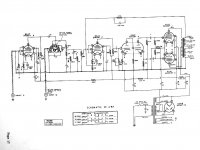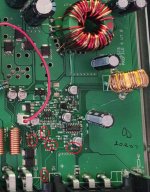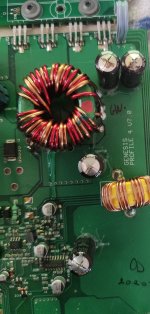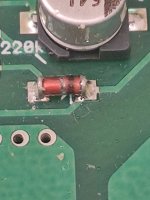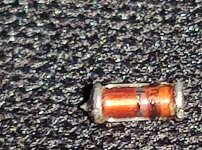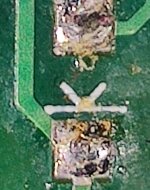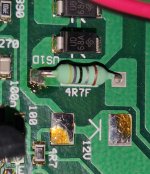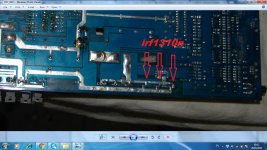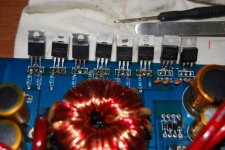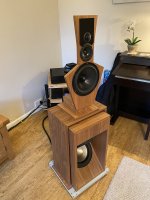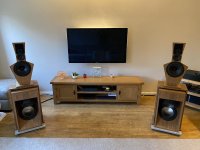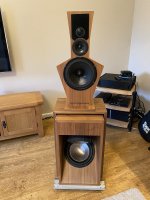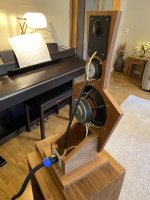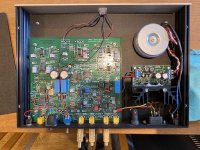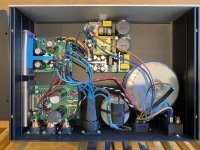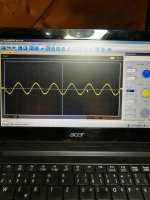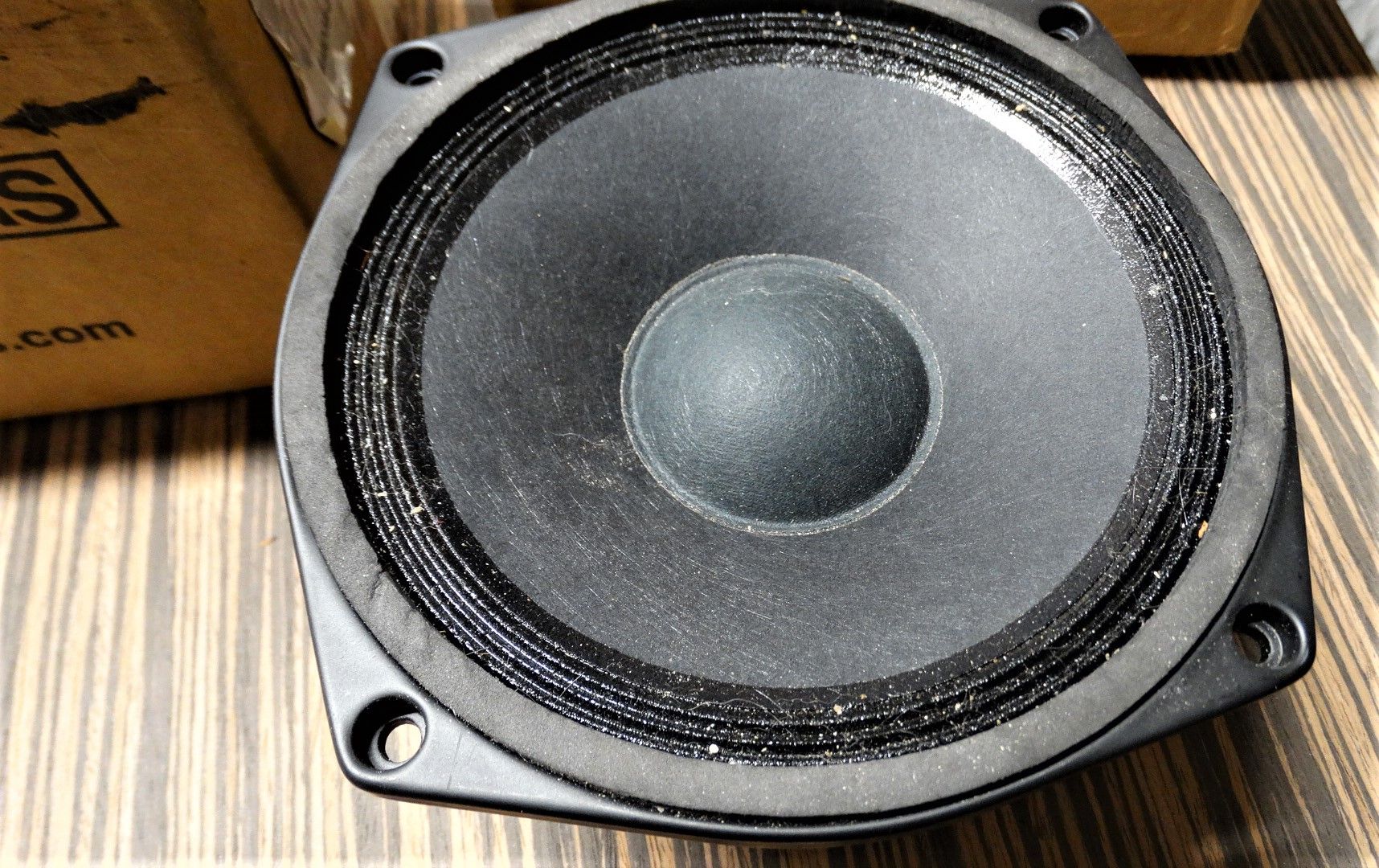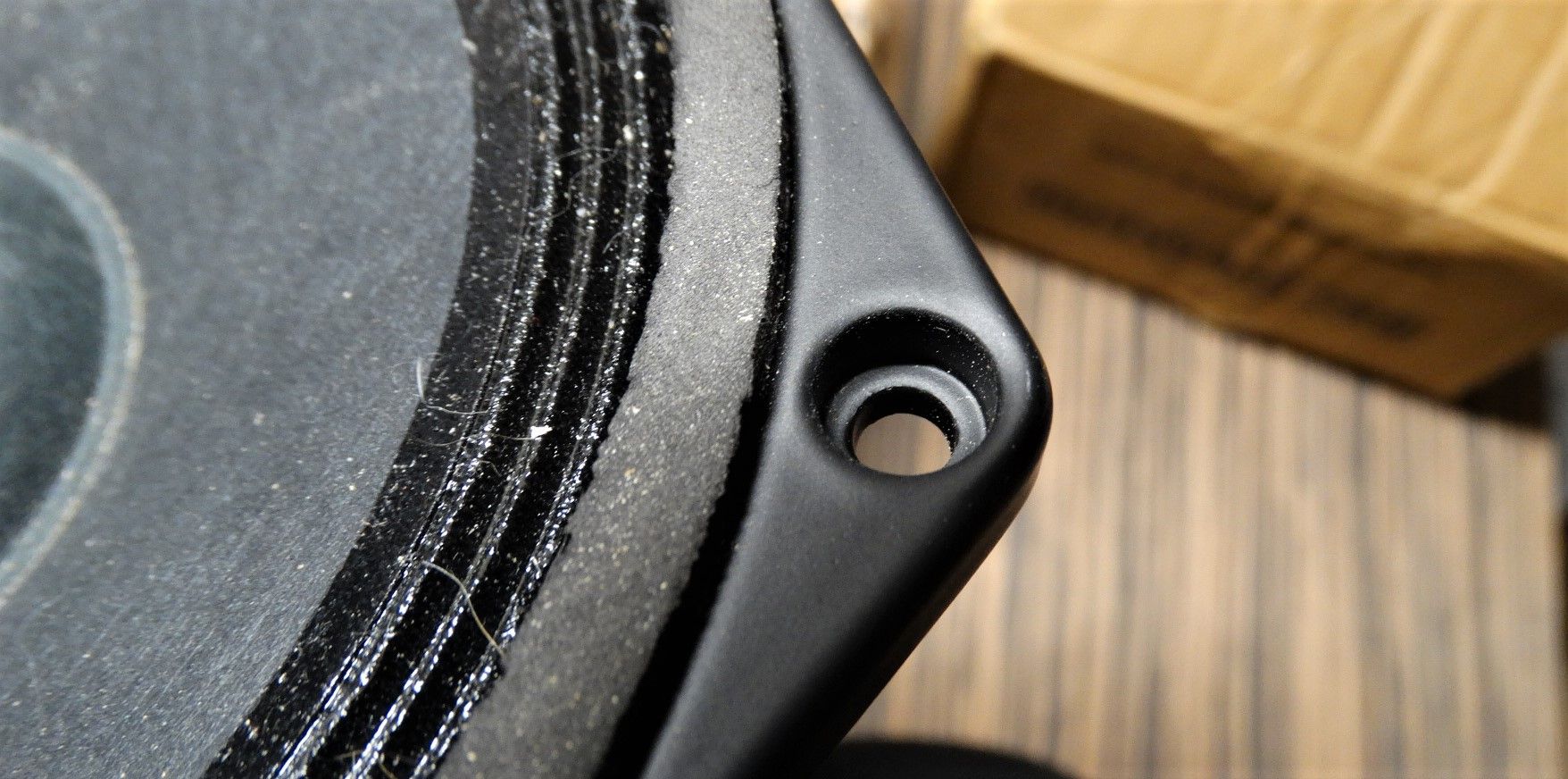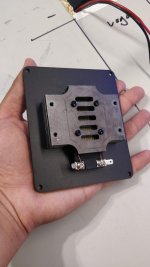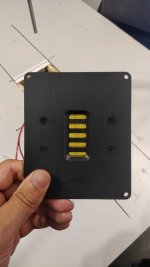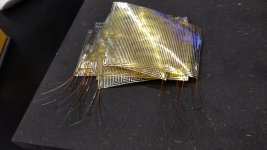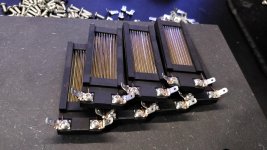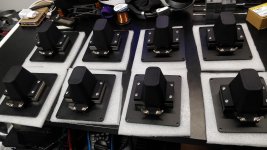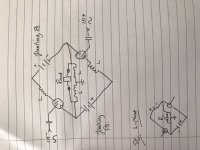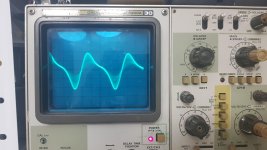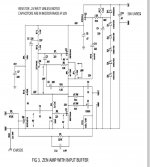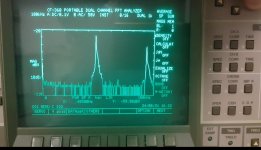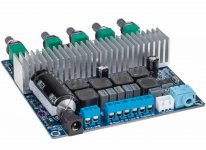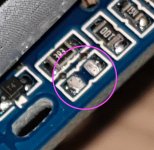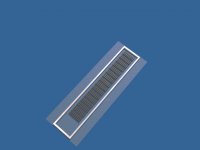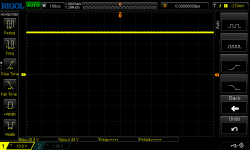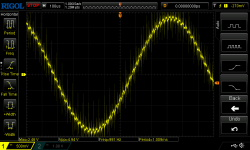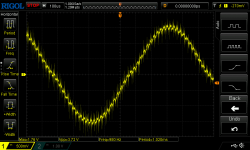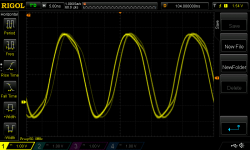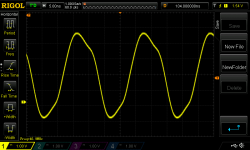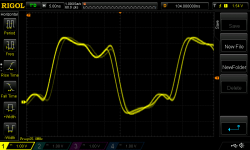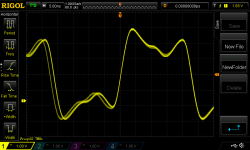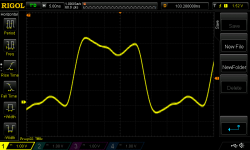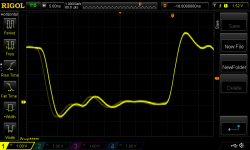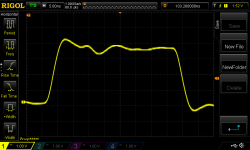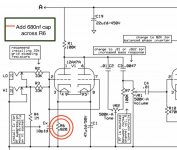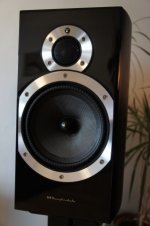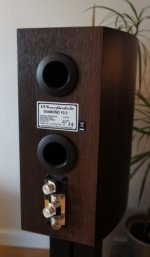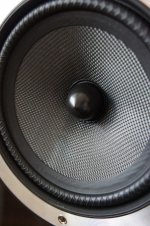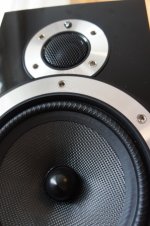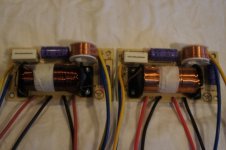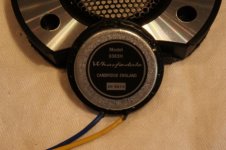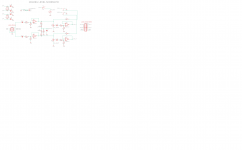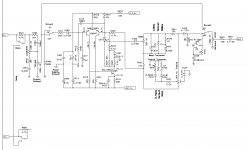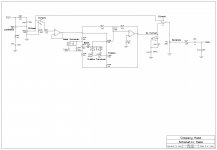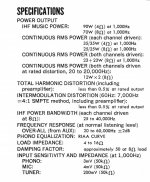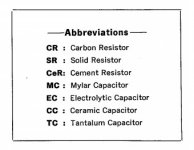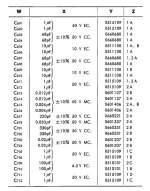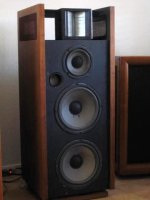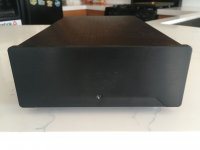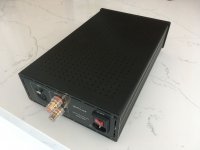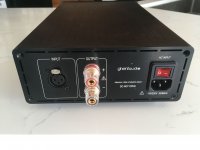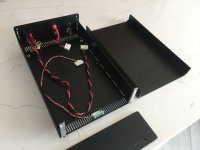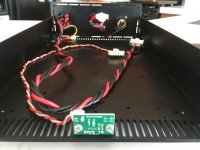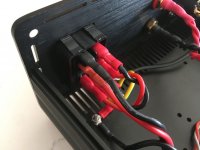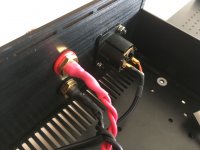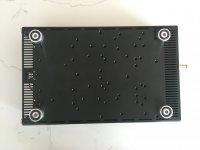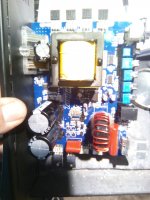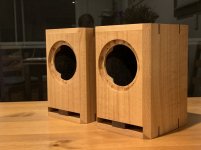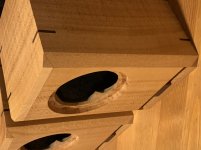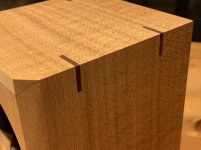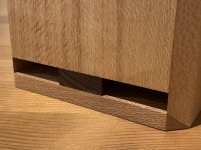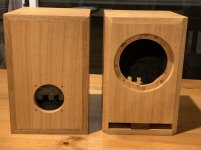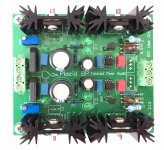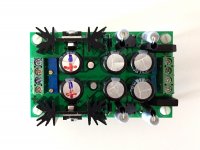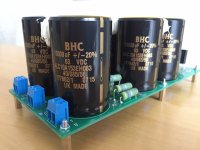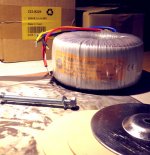Biasing a Heathkit A8-A (6L6) amp
- By Konga Man
- Tubes / Valves
- 12 Replies
I'm resurrecting an old Heathkit A8-A amp (see attached schematic) and I have a question about plate current in the two 6L6Gs (which I believe to be original 50s vintage; original spec is 6L6 or 6L6G). It has been completely recapped and all out-of-spec resistors have been replaced.
Plate voltage on the 6L6Gs is 392V; cathode voltage is 26.7V. As measured across the output transformer, the plate current is 53 mA on one tube (8V, 150Ω winding) and 47 mA on the other (7.7V, 165Ω winding). The 10W cathode resistor measures at 254Ω. Measured current across this resistor is 105 mA (26.7V/254Ω), or 52.5 mA per tube.
As I understand it, the recommended bias point for an AB amp is 70% of rated power (I=.7(P/V), or .7(19/392)), which would be ~34mA. If that's correct, the observed measurements seem high.
Questions:
- Do I understand this correctly? Is the plate current higher than optimal?
- Assuming the current is higher than you'd like, what's the best way to lower it? It seems to be a choice between lowering the plate voltage (adding an inline resistor) or bumping the cathode resistor to a higher value.
- If I switch to a pair of 6L6GC tubes (rated at 30W), would that bring things back into spec? If everything else stays the same, that would put the 70% point at 54 mA, which is very close to where it is now.
Answers? Questions? Comments? Insults?
Thanks.
Plate voltage on the 6L6Gs is 392V; cathode voltage is 26.7V. As measured across the output transformer, the plate current is 53 mA on one tube (8V, 150Ω winding) and 47 mA on the other (7.7V, 165Ω winding). The 10W cathode resistor measures at 254Ω. Measured current across this resistor is 105 mA (26.7V/254Ω), or 52.5 mA per tube.
As I understand it, the recommended bias point for an AB amp is 70% of rated power (I=.7(P/V), or .7(19/392)), which would be ~34mA. If that's correct, the observed measurements seem high.
Questions:
- Do I understand this correctly? Is the plate current higher than optimal?
- Assuming the current is higher than you'd like, what's the best way to lower it? It seems to be a choice between lowering the plate voltage (adding an inline resistor) or bumping the cathode resistor to a higher value.
- If I switch to a pair of 6L6GC tubes (rated at 30W), would that bring things back into spec? If everything else stays the same, that would put the 70% point at 54 mA, which is very close to where it is now.
Answers? Questions? Comments? Insults?
Thanks.
